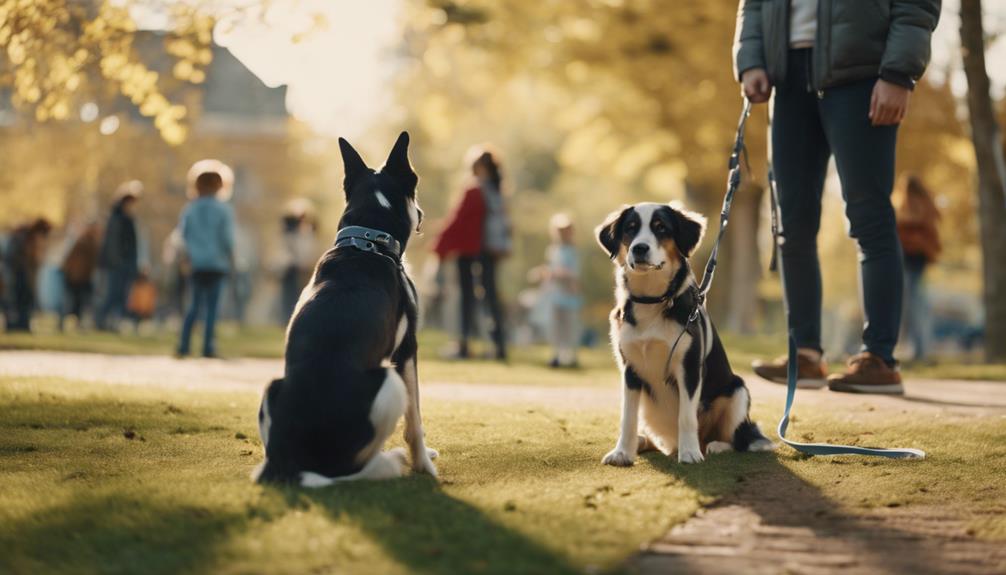Socialization is a critical component in the development of nervous pets, yet the strategies employed must be tailored to their unique needs. Effective techniques often include gradual exposure to new environments and stimuli, complemented by positive reinforcement to encourage desirable behaviors. Understanding the nuances of a pet's behavior during these interactions is essential for fostering confidence and reducing anxiety. As we explore various methods of socialization, it becomes apparent that the journey to helping nervous pets thrive is multifaceted, raising the question of which specific strategies yield the most significant benefits.
Understanding Corgi Behavior

To effectively socialize nervous Corgis, it is essential to first understand their unique behavioral traits and instincts. Corgis exhibit distinct quirks, including their strong herding instincts and playful personalities. These traits often influence their communication styles.
Corgi communication can be subtle, involving body language, vocalizations, and even facial expressions. For instance, a wagging tail may indicate happiness, while lowered ears might signal fear or anxiety. Recognizing these signs is crucial for fostering a trusting relationship.
Corgis typically thrive in structured environments, so establishing routines can be beneficial. Additionally, positive reinforcement is effective in encouraging desired behaviors. By grasping these fundamental aspects of Corgi behavior, owners can better support their nervous pets, paving the way for successful socialization.
Gradual Exposure Techniques
Building on the understanding of Corgi behavior, gradual exposure techniques can effectively help nervous pets acclimate to new environments and experiences.
These strategies involve carefully introducing pets to stimuli that may cause anxiety. Desensitization exercises play a crucial role, as they help pets become more comfortable with specific sounds, sights, or people over time.
Typically, this process occurs in controlled environments where distractions are minimized. For instance, a nervous pet can first be exposed to the sound of a doorbell from a distance before gradually moving closer as their comfort level increases.
Positive Reinforcement Methods

Positive reinforcement methods are essential for encouraging desired behaviors in nervous pets, fostering a sense of security and trust during the socialization process.
One effective technique is clicker training, which uses a distinct sound to mark positive behaviors. This method helps pets associate specific actions with rewards, making learning enjoyable.
Reward timing is crucial; it is important to provide treats immediately after the desired behavior occurs. This immediate reinforcement strengthens the connection between the action and the reward, leading to faster learning.
Consistency in using positive reinforcement will help nervous pets feel more confident in new situations.
Socialization With Other Pets
Establishing a comfortable environment for nervous pets is vital when introducing them to socialization with other animals, as this can significantly influence their confidence and behavior.
Begin with careful playdate planning, choosing calm, friendly pets to interact with your nervous animal. Start with short sessions to avoid overwhelming them, gradually increasing the duration as they become more comfortable.
Group training classes can also be beneficial, offering a structured environment where pets can learn social cues and proper behavior. These sessions encourage positive interactions, allowing nervous pets to gain confidence alongside others.
Remember to monitor their body language, ensuring they feel safe and secure throughout the process.
Patience and consistency are essential to fostering healthy relationships with other pets.
Creating a Safe Environment

A safe environment is crucial for nervous pets, as it helps them feel secure and reduces anxiety during socialization experiences.
Creating safe spaces where pets can retreat is essential. This area should be quiet, comfortable, and filled with familiar items. Additionally, incorporating calming scents can further enhance the atmosphere.
Here are some effective strategies to create a safe environment:
- Designate a safe space: Choose a quiet room or area in your home where your pet can feel secure.
- Use calming scents: Introduce pheromone diffusers or natural oils like lavender to soothe your pet.
- Limit exposure: Gradually introduce new experiences and people to avoid overwhelming your pet.
- Provide comfort items: Include favorite toys or blankets to foster a sense of safety.

